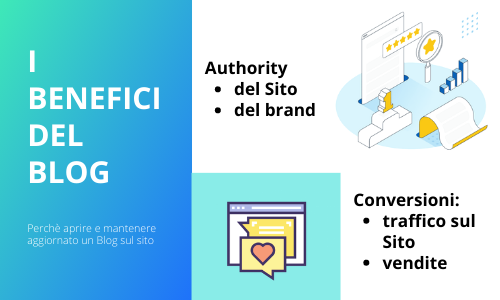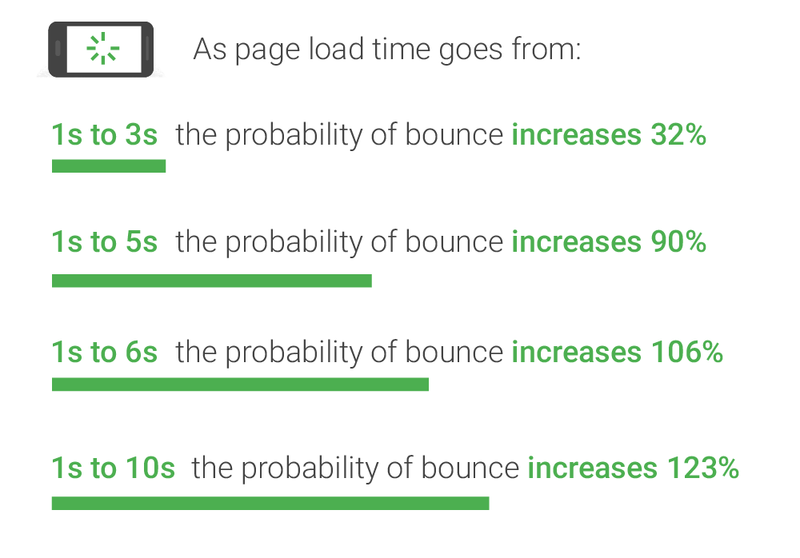Why are emails still so effective? Let's discover the advantages.
It's true that attracting traffic to the website is not enough. Then you need to convert visitors to generate value. But we still have to start with traffic. Generating it today has become anything but straightforward, as the rush to the web has dramatically increased competition.
For those who are not willing to pay to appear among the top results in Google searches, attracting traffic to the site and gaining space and visibility requires skill, expertise, and commitment. And a good dose of consistency and patience. If we do not want to invest in paid campaigns, such as Google Ads, we must accept the fact that it will not be easy to quickly achieve satisfactory results; it will take time before climbing to the top of the search results. But this is as true as the fact that it will be an investment of time and effort that will reward every effort handsomely.

How to attract traffic to the site
The website is the business card and global showcase of every activity, person, and organization today. The underlying problem is that we are now overloaded with information and alternatives.
Try searching for “women's t-shirt” on Google, and you’ll see 29 million results and related pages. If you have a women's clothing store, you might be thinking: how will users ever find me among 30 million results?
That’s a great question. It’s the question we all ask when we publish something online. Method is needed.

Certainly, without great content behind it, you won't get far.
But you shouldn't think you have great content just because the images are high quality and the texts are well written (these are, in a sense, secondary aspects).
Especially, the content must be relevant, meaning it should be of great interest to your Buyer Persona, your target user. So first of all:
1- You need to know your audience, the one you are addressing;
2- You need to understand and anticipate what content they are interested in and what they are searching for online.
Once you have correctly identified your audience and gained a solid understanding of their preferences, you can start working on the content.
You have prepared the texts, selected good images, videos, and more.
Now let's move on to some more technical matters. To become visible to search engines and build the necessary "authority" to rank on the first page of results, you need to follow the rules set by browsers (like Google).
1- Do on-page SEO to improve rankings
SEO – Search Engine Optimization – literally means optimization for search engines.
Why is SEO so important? Very simply because it is Google (more generally the search engine) that chooses which pages to highlight when we search the web.
And since it is precisely through SEO that it chooses them, the conclusion is that whether we like it or not, we cannot do without it.

We all know what SEO means by now.
In simple terms, it means writing and optimizing the content of our pages so that they are relevant and pertinent to the searches for which we want to be found.
But it's one of those cases that's “easier said than done.” Because your judge, as mentioned, will be the search engine.
And doing SEO well means paying attention to several aspects on which search engines base their scores.
The acronym itself, so short, may be misleading. In reality, SEO means optimizing numerous elements:
Doing good SEO is certainly not easy, but it's not impossible either. With the right foundation and constant practice, you can learn quickly, and the results in terms of website traffic are noticeable.
If you're not sure where to start, there are many excellent online courses available for free that can provide you with the knowledge you need. One such course is from HubSpot Academy, which is comprehensive and offers a great foundational training on all aspects of Inbound Marketing.

2- Contents and Blogging
One swallow does not make a summer, they say. And if we talk about content, this is more than ever a truth.
If you really want to build your authority on the web and therefore not only attract generic traffic to the site, but also retain users over time, you will have to prepare and publish a lot of quality content consistently.
Quality, quantity, coherence and consistency. Also and above all if you have a Blog on the site (and if you don't have one yet, you really should).
The Blog can be an unparalleled tool for acquiring not only traffic, but also Leads and conversions. But for it to work, it will need to be constantly enriched with quality content, correlated with each other.
The work of constant updating is essential to build the authority of the site and keep the audience active and loyal.
If you consistently publish content that is relevant to your audience, users will create expectations (which you will have to meet, of course).
They will come back to you periodically, to look for new articles and news. They will share the most interesting content and will mention you more and more often, on more occasions.
Site and brand authority
Blogging is a strategy that really should not be underestimated. Also and above all because in addition to the benefits for SEO and site traffic, it is truly a more unique than rare resource for sales and the image of the company.

Blog articles are quality content that cover topics in which you are experts, reflecting your product or service offerings.
In essence, in addition to building authority in terms of SEO and ranking, you will also be strengthening your company's image and authority in the eyes of potential customers.
And all this leads to very practical and tangible benefits: companies with active and quality blogs achieve +67% conversions and sales through their website.
3- Multi-formats for omni-channel
Every single piece of content you prepare can actually be worth (at least) 3, if it’s of quality. Because when you turn content into a webpage or blog article, you’re not fully leveraging its potential.
In general, the formats in which we can reproduce content are multiple: audio, video, text, graphics. Our choice will fall on the one most suitable for the topic we present and the angle from which we are addressing the subject.
For example, if we want to talk about “How to do SEO,” we will likely choose to create an article for our blog and develop a lot of quality text.
Once we have our latest article in hand, we need to envision that the same content could be reworked into at least a couple of other formats.
Imagine, for example, summarizing and organizing it to create an infographic. Alternatively, if you're comfortable with video, you could turn the text into a script and create a tutorial.
Site and brand authority
Blogging is a strategy that really should not be underestimated. Also and above all because in addition to the benefits for SEO and site traffic, it is truly a more unique than rare resource for sales and the image of the company.

Multi-format and multi-channel
- We will dedicate our article to the Blog, to enrich our site;
- the Infographic, very "sharable", we could instead share it on social media (LinkedIn, Facebook and Twitter);
- The Tutorial will be perfect for our YouTube channel.
We will have published on the site, posted on social media and uploaded to Youtube. Not bad considering we initially thought we only had some texts for a blog article!
By reworking content in multiple formats, we will not only have enriched our content offering in the strict sense, but also created an omni-channel strategy. All traffic, audience, which will be diverted to your site.
4- Optimize for voice search
Alexa, search for “women’s clothing store near me”. Or: Siri, search for “how to do SEO to increase web traffic”.
Voice assistants on your smartphone, at home, in the car.
According to a study by His Holiness Pwc, 65% of users aged 25-49 use the voice assistant to perform at least one daily search on the web.
When they provide search results, they always do so through the web and using the device’s search engine. But compared to a manual search, “voice SEO” has its own peculiarities.
Specifically, we are the ones who when we ask the voice assistant to perform a search, we place ourselves differently compared to when we do the same search ourselves, manually.
First of all, we are much more verbose, for the simple fact that we converse.

To earn a good ranking in voice searches, we need to optimize “Long Tail Keywords”. Let's see with an example what it means.
Suppose we want to prepare a cake and we need to search for the recipe on Google:
- if we are in front of our PC, we will simply type: chocolate cake recipe;
- if instead we turn to Alexa, we will ask a more colloquial question: what are the ingredients to prepare a chocolate cake?
5- Mobile Optimization
Did you know that the algorithm that Google uses to rank search results uses mobile versions of pages? Maybe not, and in that case the news will have shocked you quite a bit.
In essence, this means that if you have created an impeccable site, with unmissable content, but you have not optimized it for mobile...Google will still leave you behind.
Why the giant Google has decided to act this way, is simply explained by the data. In fact, today 60% of web users perform more searches from mobile than from desktop and in the near future the trend will only increase.
To make the mobile-friendly site we must pay attention above all to two aspects:
- loading speed of pages (and of the site in general);
- responsiveness of content (adaptation to mobile format).
For responsiveness, editors like WordPress take care of it, which typically have integrated the optimization functionality for mobile formats (smartphone, tablet).
You will have to pay attention to the loading speed.

Page loading speed is an essential factor in general for the website, because it allows you to dramatically reduce the bounce rate (abandonment rate) and in general maximizes user engagement.
The elements that most weigh down pages are images and videos.
This does not mean that you should eliminate these contents, which are essential for maximizing the User Experience.
Instead, insert them wisely, remembering always and above all to compress them before uploading them to the site.
Conclusions
Appearing at the top of search results and attracting traffic to your site is not easy at all and optimizing SEO is the first step you need to take, but it certainly cannot be the only one.
We have mentioned the strategic nature of content, the central importance of optimization for mobile and Vocal Search. And we could list too many other variables of success.
These are the ones to start with, the key ones to begin your climb to the top. Good work!
Tagged blog

